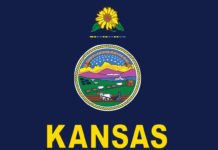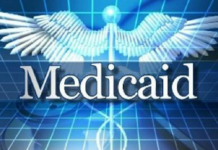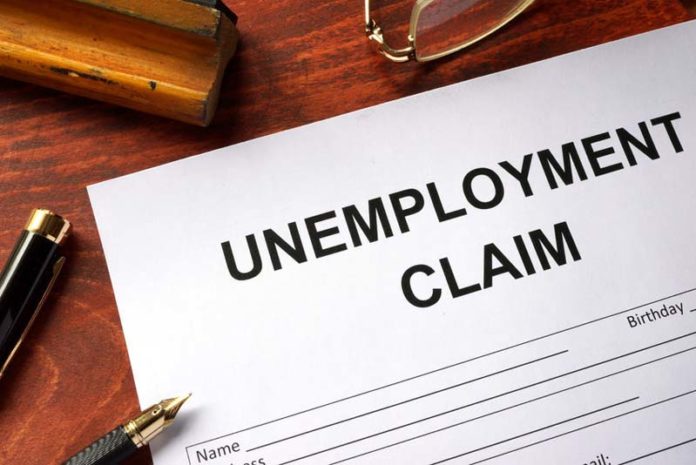Jobless claims in Kansas are surging again, signaling the state could hit another rough economic patch as the spread of COVID-19 continues to accelerate.
Initial unemployment claims climbed to 25,122 at the end of last week, an increase of nearly 19% from the end of October, when 21,171 claims were filed.
It was just down slightly from the 26,066 initial claims filed for the week ending Nov. 21, which was the highest number of claims since April when the state’s economy ground to a halt after the pandemic first hit.
Even the number for last week — 25,122 — was still higher than anything the state has seen since April 25, when 27,663 initial claims were filed.
The latest numbers come as the state has seen its unemployment rate slide from a 40-year high of nearly 12% to about 5.3% in October.
While the state’s economy has gradually rebounded from the financial damage caused by the pandemic and the ensuing stay-at-home orders, there have been warnings that it could still stumble heading into the latter part of the year.
When state revenue forecasters presented a brighter picture of the state’s economy early last month, they warned of uncertainties, namely the spread of COVID-19, the timing of a new vaccine and whether Congress would pass a new stimulus package.
Since the state’s last revenue forecast was issued Nov. 6, Kansas has seen the number of COVID-19 cases leapfrog by about 72% to 168,295 and the number of deaths rise by 53% to 1,786.
“It’s the shadow of COVID hanging over everyone,” said Jeremy Hill, director of the Center for Economic Development and Business Research at Wichita State University.
The latest data from the state Labor Department shows the initial unemployment claims are largely spread across four sectors: health care, education, manufacturing and professional services.
Health care and education each made up about 12% of the initial claims filed last week. Manufacturing and professional services each made up about 10% of the claims.
Hill said the increase in initial unemployment claims did not surprise him because it followed the center’s forecast for the Kansas economy in the second half of the year.
The center projected employment to partially recover in the third and fourth quarters of this year, but it expected overall employment to decline by 4.1% from 2019.
“In 2021, the state’s economic uncertainty remains high due to the rapidly shifting macroeconomy conditions and new developments with the novel coronavirus,” the center’s report from October said.
Hill argued for the need of a new stimulus package to stabilize core industries and keep cash flowing.
He doesn’t expect the state economy to fully recover for at least two years, although he said that won’t be known with any certainty for a while.
“It’s really about holding on until the first part of next year, when the vaccine really kicks in and consumer demands increase and that really gets cash flowing again,” he said.
There are other signs of the difficulties facing the Kansas economy.
Opportunity Insights, a research and policy institute based at Harvard University, uses big data to examine how the pandemic is affecting the economy nationally.
The think tank’s data shows that as of late November Kansas has lost 6.7% of its jobs compared to January.
As of July 12, the state had lost 4.4% of its jobs after bouncing back from severe losses in March and April when the pandemic first hit.
The data also shows the state has seen a 30% decrease in small-business openings since January.
And the number of jobs postings is down 16% compared to January.
University of Kansas economist Donna Ginther wondered how much the surge in unemployment claims might be attributed to ongoing problems with fraud claims.
“Kansas has a lot of unemployment fraud,” Ginther said of instances where Kansans are having fraudulent claims filed on their behalf. “Some of these claims may be spurious.”
Ginther said she and her husband have been affected by the fraud scheme.
“It’s pretty pervasive in the state, and it’s not clear what the Department of Labor can or is doing about it,” she said.
Gerald Grasso, spokesman for the the Department of Labor, did not respond to questions about the surge in unemployment claims.
However, Labor officials told the joint Special Committee on Economic Recovery that the agency had stopped more than 100,000 fraudulent claims.
They estimate that 80% to 90% of the claims filed in the federally funded Pandemic Unemployment Assistance program are fraudulent.
The program provides up to 39 weeks of unemployment benefits to individuals not eligible for regular unemployment.
Republican state Rep. Sean Tarwater asked Labor officials about how much they have paid out in fraud.
The Labor Department said that figure was not immediately available.
Nevertheless, the latest increase in initial unemployment claims is concerning, Ginther said.
“I think the economy is still in trouble, and that’s why you see activity on Capitol Hill,” she said, alluding to ongoing congressional discussions about a new stimulus bill.
“You’ve got the virus getting worse, which is going to affect people going out and doing anything in the economy. There’s going to be depressed demand even more so.
“It’s not a good situation.”
















